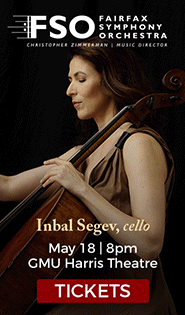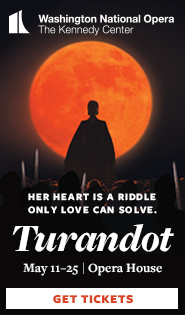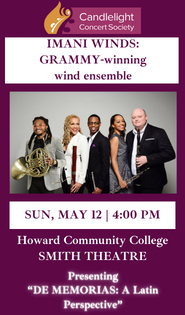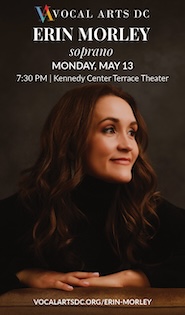Strings are the thing for CMS season finale at Wolf Trap
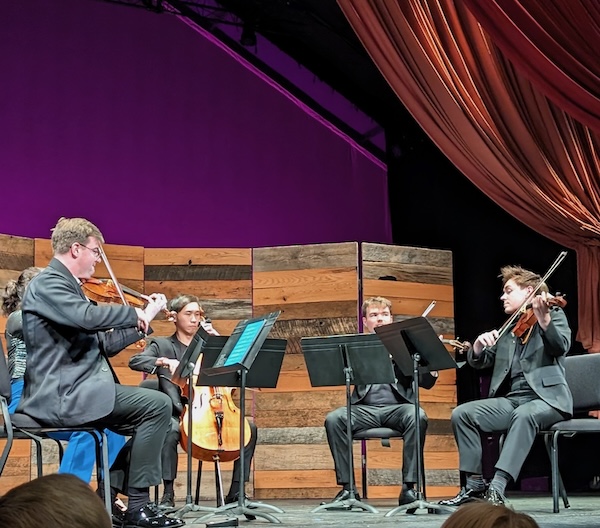
The Chamber Music Society of Lincoln Center performed Mendelssohn’s String Quintet No. 2 Friday night at Wolf Trap. Photo: WCR
Take five or six string players, add pieces for a few different combinations, culminating in a work for all of them. A simple enough recipe that Chamber Music Society of Lincoln Center has used before. The scheme yielded delicious results from a string quintet in the final CMS program to come to northern Virginia this season, heard Friday evening on the chamber music series in the Barns at Wolf Trap, curated by pianist Wu Han.
Two string trios opened the concert, a combination that gave each of the two violinists and violists the chance to play with cellist Sihao He in this rewarding genre. Violinist Bella Hristova and cellist Timothy Ridout were first, in Beethoven’s outstanding String Trio No. 1. Begun even before the young composer’s career-altering move to Vienna, it is a remarkably assured work for his maiden attempt to write for this combination of instruments.
The three musicians matched one another in sheer beauty of rarefied tone from the opening of this six-movement work. The instrumentation offers the violist especially a much more central role than in a string quartet, and Ridout rose to the occasion with sparkling playing marked by rich and colorful sound in impeccable intonation. The trio seemed not only balanced in ensemble but on the same page in terms of pacing and expression, bringing out unusual formal aspects of the first movement with exceptional clarity.
Two slow movements and two minuets add range to this highly varied trio, with Hristova’s demure tone shining at the top of the texture. Sihao He plied his ardent cello sound to support her, especially partnering effectively with Ridout on the folksy drone accompanying Hristova in the trio of fifth movement. The two minuets contrasted pleasingly in character, the gentle third movement replete with playful agogic accents against the faster, more robust fifth movement. The finale, even at a breathless tempo, showed off the accurate sixteenth-note runs of all three players.
Violinist Chad Hoopes and violist Matthew Lipman faced a different kind of challenge in Jean Françaix’s String Trio. Its vivid first movement, in which all three instruments play with mutes on the strings, scampered and scurried to delightful effect. Hoopes and Lipman tended to force their sound a little more than the previous pair, leading themselves and He into a less polished ensemble result at times.
In the broader second movement, with a popular, music-hall kind of flair, there were rhythmic differences as well. The more querulous trio of this movement suited their more individualized approach best. The sultry third movement proved the highlight, with jazz-adjacent harmonies evoking a smoke-filled room. The concluding rondo again felt slightly impatient, as if the three musicians did not quite yield to one another in ideal cooperation.
Without a doubt, having two such excellent violists made Frank Bridge’s rarely heard Lament for Two Violas an unexpected delight. Here Ridout took the top part, which he played with his eminently glowing tone, leaving the equally important second part to the more assertive rasp of Lipman’s huskier instrument. The collective sound in the piece’s double-stopped chords deepened the scope of the two instruments, especially rich on the lower strings, with a powerful forte end deployed to bring out the work’s emotional range.
When all five musicians finally came together for Mendelssohn’s String Quintet No. 2, the presence of Hoopes and Lipman on first violin and viola, respectively, inclined the piece toward an edgier sound. This was an advantage in the work’s more symphonic passages, where Hoopes deployed his steely E string to the top of exceptionally loud textures. The intonation and ensemble unity suffered at times, but the piece requires a broad, daring approach.
The gentler middle movements brought out the ensemble’s best moments. A jocund tempo enlivened the second movement, in which all five musicians reveled in the extensive contrapuntal interplay and more intimate, softer mood. Lipman and Ridout featured prominently in the soulful slow movement, with antiphonal exchanges that heightened the emotional outpouring of this tragic Adagio.
Ignoring the audience’s insistence on applauding after every movement, the quintet lunged into a lithe and rippling reading of the Finale. Blistering runs of rapid notes pulsated obsessively through all instruments, rounding out a substantial program that ran over two hours without tiring out the ear, proving the season highlight it was predicted to be.
_______
One brief note to the presenter: musicians warming up downstairs in the Barns can be heard onstage, a distraction that bled through before pieces began and between movements in this concert, as Hristova noted apologetically to the audience before the Beethoven Trio began. Adding some sound-proofing to the summer budget would be money well spent.
Wolf Trap has announced the line-up for next season’s Chamber Music at the Barns series, with concerts by the Viano Quartet, countertenor John Holiday, and piano duo Alessio Bax and Lucille Chung, as well as five programs imported from Chamber Music Society of Lincoln Center. wolftrap.org
